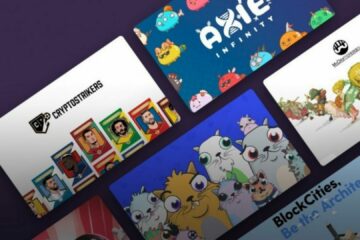As cryptocurrencies NFTs became more mainstream, it was only natural that there would be attempts to create new coins and tokens on top them. The first Non-Fungible Token (NFT) was created in 2014 by an anonymous programmer on Bitcointalk forums where he proposed the idea originally called “child chains” which allows individual child transactions bypassing Ethereum main network Blockchain altogether as well as automatic upgrades via soft forks without miner approval or consensus; this concept has since been renamed into what we know today -The ERC721 Standard. After just two years from its initial release date, over 20 different types were already defined within this protocol including ones related not only financial markets but real estate.
What’s the importance of NFTs?
Cryptocurrencies were the first form of digital currency to take off, but they’re not alone. Non-fungible tokens (NFTs) have come alongside them and introduced a whole new way for artists/creators who want their work showcased or collections exposed through blockchain technology – creating an entirely novel medium where no two pieces are alike! With this comes great opportunities: Not only can you now own something that’s truly your very own(asmallcollector), there is full transparency into its authenticity which means even collectors will know exactly how much value lies within each individual piece…
The latest trend in the art world is an exciting new form of creativity known as NFTs (non-fungible tokens). These works can take any form from digital paintings, collectibles or even music files that have been extended with creative extensions to produce pieces no one has seen before. Whether you’re looking for something refreshing and different like sneakers decorated by your favorite artist(s) after they’ve released their newest album; if it’s unique then this might just be what YOU’RE seeking!
Imagine the Mona Lisa being photographed and then reproduced in perfect accuracy on a thousand identical copies. Now imagine those paintings are available for purchase through an auction house, with each copy certified by blockchain technology as genuine – how could anyone ever know which one was truly original?
The answer lies not just at transactional speeds but also authenticity tracking via Netki’s open-source protocol built specifically to solve this very problem: “Proof of Provenance.
Who created the first NFT?
Now where did this technological phenomenon come from? The history of NFTs and their inventor, Kevin McCoy began on May 3rd 2014. He minted his non fungible token “Quantum” way before crypto art markets exploded into popularity (2014-2021). As it stands now this one-of a kind pixelated image with denoting circles arcs shapes that share center is available for sale at an asking price over seven million dollars!
The digital artwork of McCoy and his wife Jennifer is exceptional. They have been in the art world for many years, establishing themselves with their creative technology to produce NFT works that were bought by collectors who enjoy owning them without going public on biddings wars like most other artists do at galleries or auctions houses alike; instead these passionate creators sell privately between themselves while maintaining an authenticity all its own through documentation such as Whois records which can be found online if one wishes too.
Who can create NFTs?
The Portion app is the best way to mint your own NFTs on Ethereum. You can make digital art, musicianship or even just about anything else and share it with others in an easy-to use format! The process couldn’t be easier: download portion from iTunes Store then follow this step by step guide that will show you how quickly they’re created – before long yours could already have money pouring into them thanks so much for being here today at Crypto atoms where things always go purple.
The History of Non-Fungible Tokens
Cryptoart coins have become a popular way to invest in the crypto space. The first CryptoPunk coin was created, and it became so sought after that many people would pay high prices for them because they wanted what others had already acquired – even just by chance on social media sites such as Facebook or Reddit where these random auctions take place with little warning!
2012-2013: Colored Coins
This journey is a long story with many people, artists and projects involved. Let’s dive into Colored Coins! The idea of NFTs emerged from what are called “colored coins” originally issued on the Bitcoin Blockchain in 2012-2013. These tokens represent real world assets onto blockchain which can prove ownership for anything such as precious metals or cars to even property shares & bonds – not too much more sophisticated than their original concept but still very interesting indeed.
2014: Counterparty
2014: Counterparty is a peer-to-peer financial platform and distributed, open source internet protocol built on the Bitcoin blockchain. This allowed users of all sorts to create their own tradable currencies that could be exchanged with other participants through decentralized trading platforms such as DEXs (Decentralized Exchanges). One example was meme trading without counterfeit issues which has been steadily growing since its inception 3 years ago!
In April 2015, Counterparty partnered with the team creators of Spells of Genesis. The game’s founders helped fund development by introducing their own in-game currency called BitCrystals that could be bought or sold for US Dollars on exchanges around the world – this is one way they were able to finance an upcoming blockchain release from its developers themselves!
2016: Trading Cards on Counterparty
In August 2016 new trends emerged. A partnership between Counterparty and one of North America’s most popular trading card games, Force of Will (FOW), was announced to launch an initial coin offering for their cards soon after in September! This is significant because it signals how blockchain-based assets have become accepted by not only gamers but also companies who don’t normally deal or even see them as valuable enough before now.” Their entrance into this market came as no surprise; these types of games are known worldwide Whenever there’s a new craze or fad in toy retailing then you can bet your bottom dollar someone will want some related collectibles – especially if they’re available through crypto-currency methods like those offered by CC platforms.



0 Comments